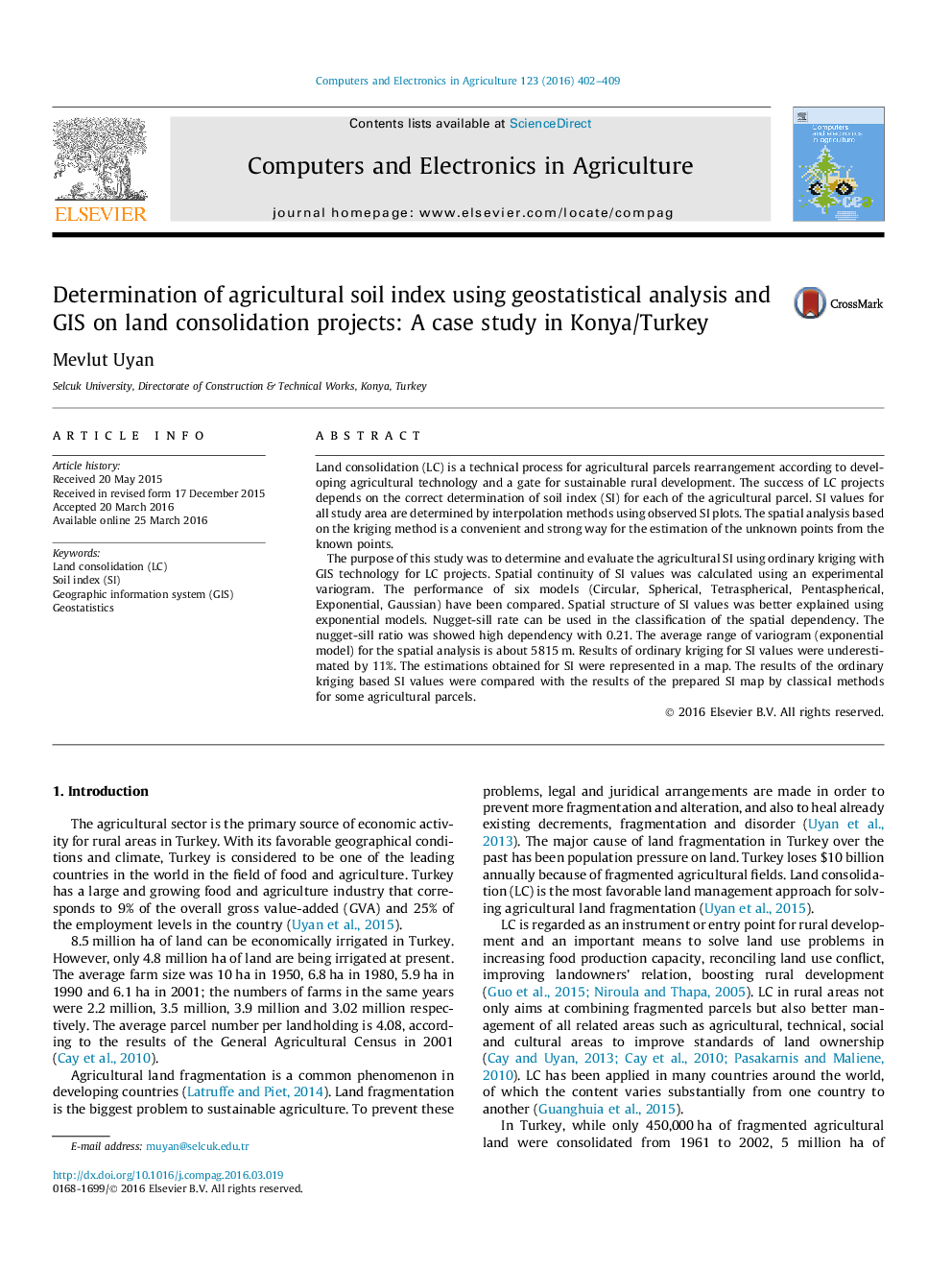| کد مقاله | کد نشریه | سال انتشار | مقاله انگلیسی | نسخه تمام متن |
|---|---|---|---|---|
| 83973 | 158856 | 2016 | 8 صفحه PDF | دانلود رایگان |
• Land consolidation (LC) is a technical-agrarian process of land parcels rearrangement.
• One of the most important steps of LC projects is land reallocation studies.
• Reallocation quantity depends on the agricultural land gradation.
• The purpose: determine and evaluate the agricultural SI maps for LC using geostatis.
Land consolidation (LC) is a technical process for agricultural parcels rearrangement according to developing agricultural technology and a gate for sustainable rural development. The success of LC projects depends on the correct determination of soil index (SI) for each of the agricultural parcel. SI values for all study area are determined by interpolation methods using observed SI plots. The spatial analysis based on the kriging method is a convenient and strong way for the estimation of the unknown points from the known points.The purpose of this study was to determine and evaluate the agricultural SI using ordinary kriging with GIS technology for LC projects. Spatial continuity of SI values was calculated using an experimental variogram. The performance of six models (Circular, Spherical, Tetraspherical, Pentaspherical, Exponential, Gaussian) have been compared. Spatial structure of SI values was better explained using exponential models. Nugget-sill rate can be used in the classification of the spatial dependency. The nugget-sill ratio was showed high dependency with 0.21. The average range of variogram (exponential model) for the spatial analysis is about 5815 m. Results of ordinary kriging for SI values were underestimated by 11%. The estimations obtained for SI were represented in a map. The results of the ordinary kriging based SI values were compared with the results of the prepared SI map by classical methods for some agricultural parcels.
Journal: Computers and Electronics in Agriculture - Volume 123, April 2016, Pages 402–409
